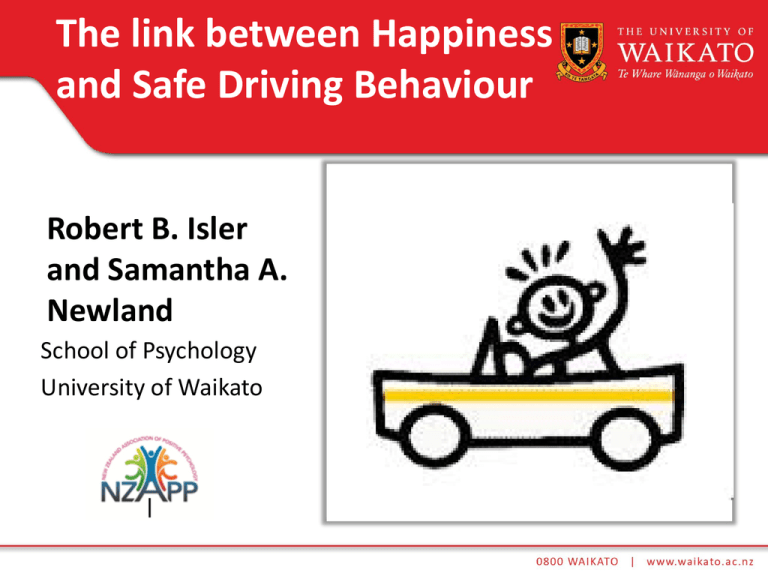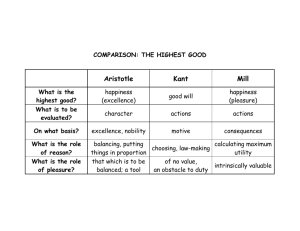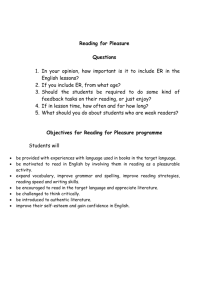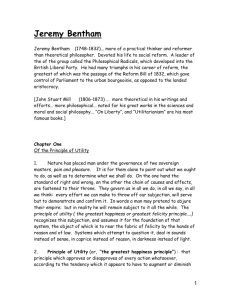PPT
advertisement

The link between Happiness and Safe Driving Behaviour Robert B. Isler and Samantha A. Newland School of Psychology University of Waikato Video People drive the way they live. 2 3 Driver violations intentions predict risky driving behaviour leading to crashes. to crashes: Driver Behaviour Questionnaire: In the future how often would you expect to do each of the following? Never - 0 Certain - 4 1. Speed over the legal limit 2. Be angry about a bad driver 3. Deliberately violate a road rule 4. Cut off other drivers 5. … etc., 4 5 6 People drive the way they live. 7 Are flourishing people low-risk drivers? f Mental Health Mental Disorder Languishing Moderate Mental Health Flourishing Three Orientations to Happiness and Life Satisfaction 10 First Pathway to Happiness: Pleasure PLEASURE: Hedonic definition of well-being: More experienced pleasure is equivalent to higher well-being. e.g., - Life is too short to postpone the pleasure it can provide - I go out of my way to feel euphoric 11 Second Pathway to Happiness: Meaning MEANING: Finding meaning in one’s life is an important determinant of psychological well-being. e.g., - I have a responsibility to make the world a better place - What I do matters to the society 1 = Strongly disagree ……. 5 = Strongly agree 12 Third Pathway to Happiness: Engagement ENGAGEMENT: Well-being through engaging in activities that are engrossing and absorbingcreating flow feelings. e.g., - I am always very absorbed in what I do - Regardless what I am doing, time passes quickly. 1 = Strongly disagree ……. 5 = Strongly agree 13 Questionnaire 1. 2. 3. 4. 14 Demographics: Age, Gender, Licence type, Mileage Driving History: Fines, Near Misses and Crashes (Incidences) Driver Behaviour Questionnaire: Driver Violations Intentions (20 Questions) Three Dimensions of Well-being: Pleasure, Engagement, Meaning (18 Questions) Sample - 15 160 first, second and third year students Age range: 17 - 48 years; Mean: 24 years 17-25 years (N=140); >25 years (N=20) 116 females, 44 males Incidences and mileage, by Groups 16 Pleasure, Meaning and Engagement, by Groups 17 r = -0.6719, p < 0.01, R2 = 0.45 18 r = -0.5850, p < 0.01, R2 = 0.34 19 r = 0.3163, p < 0.01, R2 = 0.1 20 r = -0.532, p < 0.01, R2 = 0.28 21 Maladaptive coping strategies People engage in maladaptive coping strategies in order to cope with psychological issues by doing too much of something – or not enough e.g.,: Starving Driving too slowly Insomnia (Fatigue) Procrastination Abstinence Bored 22 ------------------------------------------------------- Indulging Driving too fast Oversleeping Workaholic Drink-Driving Stress Conclusions • The happiness dimensions of meaning and engagement strongly relate to low-risk driving behaviour • The happiness dimension of pleasure may predict risky driving - possibly relating to sensation and thrill seeking 23 24 25








